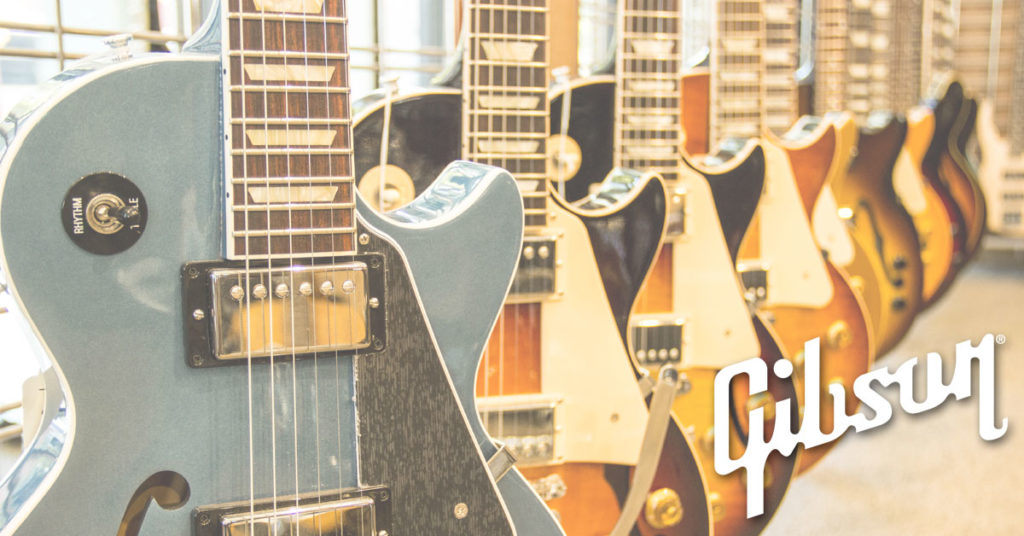Tennessee is mostly known for its whisky, the country music hall of fame, and the Gibson Guitar factory. For any guitarist, the prospect of seeing how one of the oldest electric guitar manufacturers builds its instruments is probably pretty exciting. For a luthier, it could fuel your contempt for the company or give you some reaffirmation about your own position. It’s easy to think that a massive company like Gibson would just be a series of CNC machines, auto-sprayers, and a chain of underpaid peons whose knowledge of guitars does not extend beyond their tasks.
In reality, the construction and assembly line is a group of extremely knowledgeable and passionate people working hard to keep up with the demand – the Gibson Guitar Factory Tour gives you a chance to see how they manage to consistently create quality instruments with a human touch.
When I say “the Gibson Guitar Factory”, I’m actually referring to two separate factories – both in Tennessee. There seems to be a lot of confusion as to which factory does what – it’s pretty simple: the Gibson Memphis factory is where their hollow and semi-hollow bodied models are made (ES-XXX, Lucille, anything with a Bigsby). The Gibson USA factory in Nashville takes care of the solid-body builds (Les Paul, SG, Explorer, Firebird, etc).
Each offer a tour that’ll allow you to see their luthiers at work while giving you an interesting history lesson and some insight into their processes.
The Nashville Factory
The Gibson Showcase tour in Nashville includes a visit to the rough factory, which is where all of the raw wood is ripped down, book-matched, rough-cut, glued, and sanded.
Of particular interest here is the chambering process – this is a sort of controversial subject in the world of Gibson Guitars due to the company previously having made adjustments to their original boring pattern to achieve a lightweight body. Many enthusiasts complained about a significant decrease in sustain and tonal changes – if you ever sell a vintage Gibson, don’t be surprised if you have a stream of buyers questioning and obsessing over the weight of the guitar.
The rough factory tour shows that even in Gibson’s most mechanized manufacturing process, the care and innovation is still there – they listened to their players and made suitable compromises to the chambering pattern to keep the center of the body solid and retain its tonal qualities.
All of the wood for the necks is kiln-dried and thoroughly inspected, and there seems to be no oversight in the whole process – the entire factory’s climate is controlled by a monitoring system that uses water sprayers on the ceiling to keep the air-moisture at a constant.
Gibson also includes an RFID tag on each of their fretboards coming from the rough factory – this allows them to keep tabs on their inventory as well as verify authenticity (in newer models, at least).
Gibson’s Critics on the Factory Tour
Gibson is one of the earliest electric guitar companies and is responsible for a lot of the innovation that has made this instrument popular and playable (ex.; truss rods). While Gibson’s guitar factory tour is impressive, it’s also an example of what many critics of the company and of larger manufacturers in general despise.
“Not a single guitar passed through the hands of a luthier”
That’s a comment I found on a YouTube video about the factory that I found intriguing. I don’t know of the critics are just an extremely vocal minority or if the quality of the company’s manufacturing process has truly declined, but I have to assume that the shear volume of instruments being built there to fulfill orders worldwide is going to let a percentage of inferior ones slip through.
While the manufacturing process begins with a more mechanized approach, the human touch becomes more prominent as the guitars move along the assembly line – each guitar that’s built here has had many hands on it, but the number of people who are qualified to give it a passing grade before being shipped out is very few. Of course there’s human error that comes along with human touch, but that error has to get by some people who have been with the company for a long time and know what to look for.
Some of the rage against the company is very specific, focusing on pickup or bridge placement being off by millimeters, and virtually everyone with something negative to say is going to tell you that the company’s prices are not justified. I agree with the price points being quite high, but I have no criticism of the way they’re building them. I especially liked that they created a machine to analyze and level the frets.

